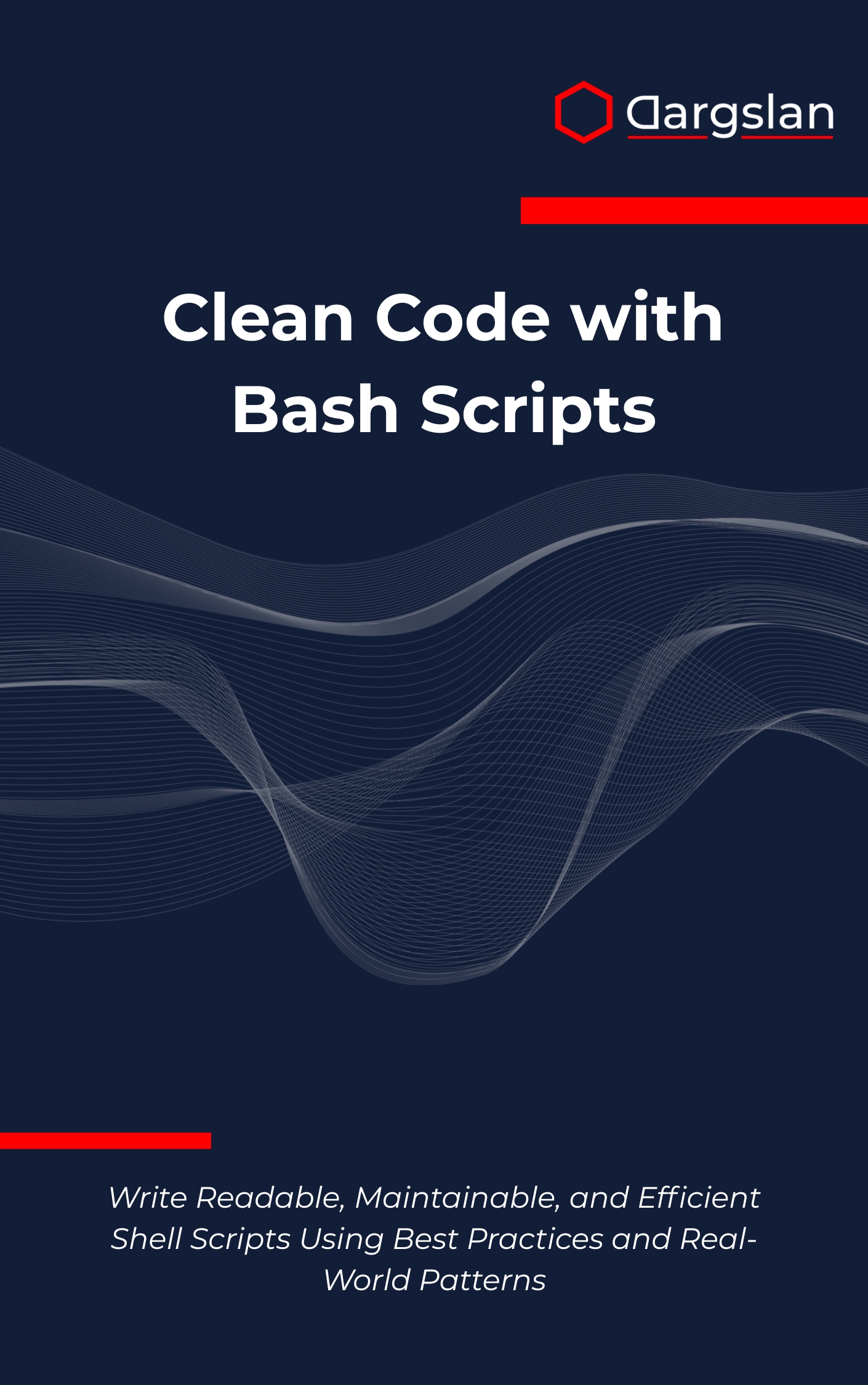Clean Code with Bash Scripts
Bash Clean Code Practices,Write clean, efficient Bash scripts with best practices for readability and performance.

Too many shell scripts start as quick fixes and quietly grow into brittle, risky tools. If you’re ready to replace ad hoc hacks with professional automation, this book shows you how to engineer Bash like a pro. Learn the patterns, discipline, and practical techniques that make your scripts readable, testable, and dependable in production.
You’ll walk away with a toolkit for writing scripts your teammates will actually enjoy maintaining—without sacrificing speed or flexibility.
Write Readable, Maintainable, and Efficient Shell Scripts Using Best Practices and Real-World Patterns
Overview
Clean Code with Bash Scripts is an IT book and practical programming guide that transforms everyday Scripts & Scripting tasks into maintainable, production-ready automation. In Write Readable, Maintainable, and Efficient Shell Scripts Using Best Practices and Real-World Patterns, you’ll apply Clean Code principles to Bash scripting fundamentals while mastering error handling strategies, logging and debugging techniques, modular function design, command-line interface development, configuration management, and input validation. Along the way, you’ll practice code refactoring, reusable library creation, professional formatting standards, linting tool integration, production automation practices, and systematic debugging approaches—making this technical book a reliable reference for both teams and solo engineers.
Who This Book Is For
- DevOps engineers and SREs who want automation that scales: build confident deployment, backup, and incident tooling with predictable behavior and clean, testable structure.
- System administrators and IT operations professionals looking to level up: learn to replace fragile one-off scripts with modular functions, CLI tools, and robust error handling.
- Developers, QA, and students ready to sharpen their scripting edge: take the next step from “it works” to “it’s maintainable,” and create scripts your team will trust and reuse.
Key Lessons and Takeaways
- Design scripts like software: use modular function design, clear naming, and directory structure to create reusable libraries and scalable automation.
- Harden your scripts for production: implement rigorous input validation, error handling strategies, and consistent logging and debugging techniques to reduce outages and speed recovery.
- Refactor with confidence: apply code refactoring patterns, professional formatting standards, and linting tool integration to improve reliability without changing behavior.
Why You’ll Love This Book
This guide blends clarity with pragmatism: short, focused explanations followed by concrete examples that mirror real operational needs. You’ll get step-by-step walkthroughs, mini-projects, and checklists that demonstrate exactly how to adopt cleaner patterns in existing code. From building intuitive command-line interfaces to introducing configuration management, every chapter delivers immediate, on-the-job value.
How to Get the Most Out of It
- Follow the progression from fundamentals to patterns: begin by tightening your Bash basics and safe defaults, then layer in modularity, structured error handling, and robust CLI design before tackling refactoring and advanced automation.
- Apply each concept in a live script: add set -Eeuo pipefail, validate parameters, standardize logging, and capture return codes; then integrate a linter and run your scripts under different environments to uncover hidden assumptions.
- Complete the mini-projects: build a reusable CLI utility template, create a backup and rotation workflow with alerts, and refactor a legacy script into a library-driven tool with configuration files and tests.
What You’ll Implement in Practice
- Consistent structure: layout conventions for bin/, lib/, and config/ directories, plus naming standards that make scripts self-documenting.
- Error and exit discipline: centralized traps, return-value handling, retries with backoff, and readable failure messages for faster troubleshooting.
- Logging that works for people and machines: human-readable logs for operators, and structured logs for pipelines and monitoring tools.
- Safer interfaces: predictable CLI flags, helpful usage output, and strict input validation to prevent dangerous defaults and silent failures.
- Refactoring patterns: extract-functions, guard-clauses, and dependency isolation that turn monolithic scripts into portable, testable components.
- Automation at scale: configuration management techniques to separate code from environment, enabling easy promotion from dev to prod.
Standout Features You’ll Use Every Day
- Reusable library creation to avoid copy-paste and keep behavior consistent across scripts and teams.
- Linting tool integration (e.g., ShellCheck and CI hooks) to catch pitfalls early and enforce professional formatting standards.
- Systematic debugging approaches that shorten mean time to resolution with trace modes, context-rich logs, and reproducible issue templates.
Real-World Scenarios Covered
- Deployments with pre-flight checks, rollback logic, and idempotent operations for safer releases.
- Data pipelines that validate inputs, handle partial failures, and emit metrics for observability.
- Compliance-friendly operations with auditable logs, minimal privileges, and explicit configuration.
Reader Benefits at a Glance
- Speed: ship reliable scripts faster by following proven patterns and templates.
- Quality: fewer production surprises thanks to validated inputs, clear errors, and robust logging.
- Team alignment: consistent style and structure that make peer reviews smoother and onboarding easier.
Get Your Copy
Encourage readers to take action with a strong CTA:
Start writing scripts that are clean on day one and still clean a year from now. Your future self—and your on-call teammates—will thank you.




